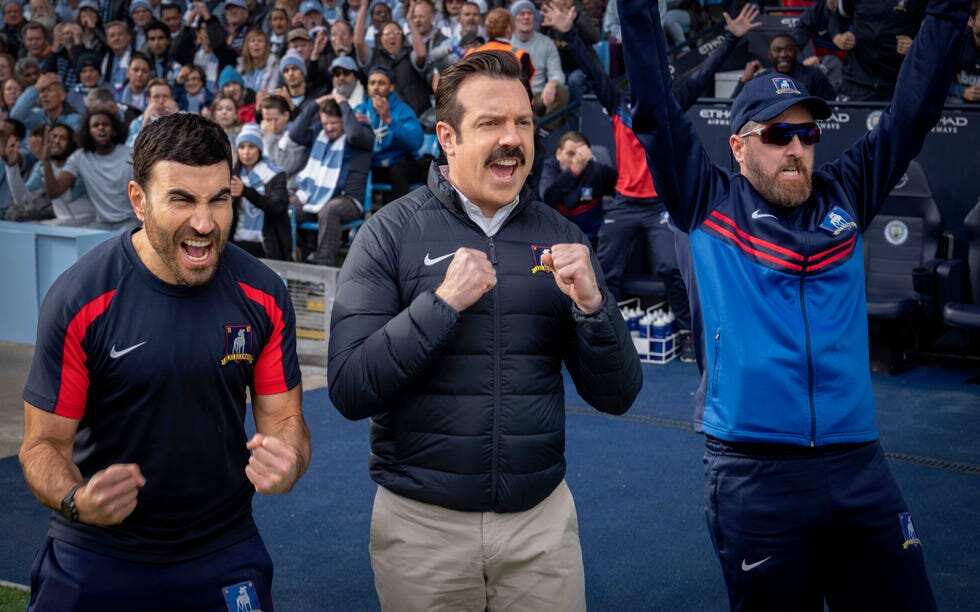One of the first things Lasso did was put up a sign in the locker room that said “Believe.” That motto works for performance IRL when you put your belief in the process, not the outcome. “Invest your belief in what you can control and have a hand in, like your ability to put your training into play,” says Peter Economou, Ph.D., director of Rutgers Behavioral Health & Sport Psychology. “You have to have values that are driving you to perform. Those are things to believe in.”
Lasso was known to say, “There's two buttons I never like to hit: that's panic and snooze.” The mental performance literature says something like that, too, but calls it the Yerkes-Dodson curve—the U-shaped relationship between performance and how revved up we are. We underperform when we’re too revved; same when we’re too relaxed. “If snooze is a zero and panic is a 10, I try to help people recognize what their individualized zone of optional functioning is,” says Jamie Shapiro, PhD, professor of sport and performance psychology at the University of Denver. Then, figure out what gets you to your ideal number. Techniques like mindfulness can chill you out, while different choices of music can help take you either way.

Lasso’s compassionate approach meant not raising his voice with the players—but not glossing over what went wrong, either. His accountability-without-abuse style should trigger a big note-to-self. “Notice your inner thoughts and label negative ones, but don’t let them rule you,” says Sam Zizzi, Ed.D, a professor in the Sport, Exercise and Performance Psychology program at West Virginia University. “The metaphor I use is that they can stay in the car, but they can’t drive the car—they need to stay in the back seat.” If the negativity doesn’t resolve, give it a timeframe—allow yourself to be mad whether it’s for 5 minutes or 1 hour. Then move on. Or, as Lasso frequently says, “You know what the happiest animal on Earth is? It's a goldfish. You know why? It's got a 10-second memory.”
“Anything you’re trying to do or get better at—especially competing at a high level—is a difficult thing to do,” Zizzi says. The inventiveness in coaching, the leading with compassion, the acknowledgement that doing hard things can be hard—all of it helped Lasso put joy into even “type 2” fun—the challenging, difficult workouts that feel super rewarding and “fun.” “Wouldn’t you want to play for that guy?,” Zizzi asks. Be “that guy” for yourself: Notice what you love about your sport; think about what keeps you coming back, and see how you can fill your tank by focusing on that. Or, as Lasso said “Just listen to your gut. And on the way down to your gut, check in with your heart. Between those two things, they’ll let you know what’s what.”
This story appears in the November/December 2025 issue of Men's Health.
<img>
Whether aiming for strength, big arms, or visible abs, Men’s Health offers a training plan for every goal.
<img>
Your fitness HQ isn’t the gym—it’s the kitchen. Master everything from pre-workout snacks to muscle-building nutrition.
<img>
Build huge quads in your 30s, get lean in your 40s, or achieve peak fitness after 50. Men's Health is here to guide you.
Maximize and maintain your fitness with a Men's Health subscription. Enjoy expert training plans, 450+ workouts, unlimited access to MensHealth.com, print magazines and more.